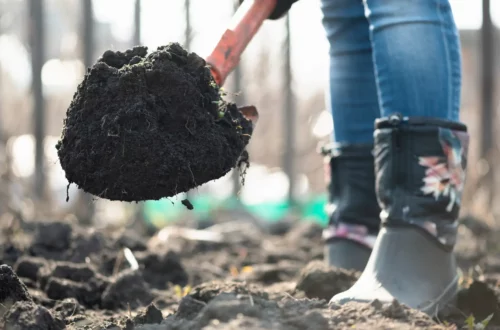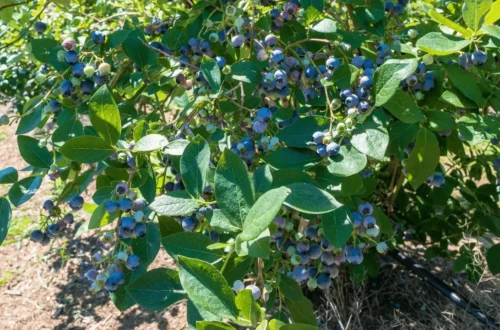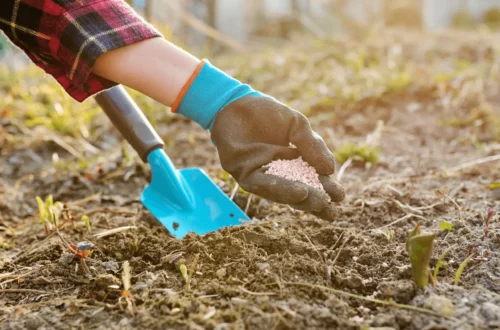How to Grow a Sustainable Garden: A Beginner’s Guide
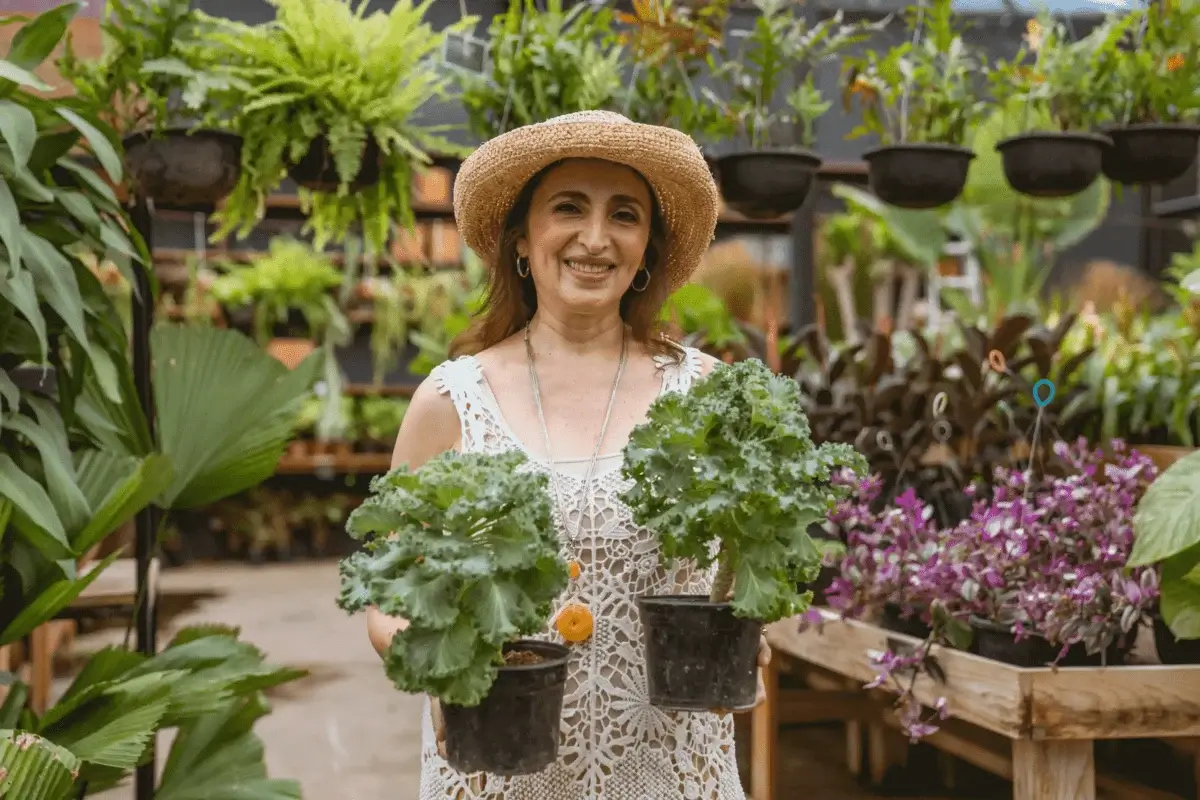
When starting your first garden, it’s natural to feel overwhelmed. However, by choosing suitable plants that thrive in your area and understanding the soil and climate conditions, you can simplify the process. Creating a sustainable garden takes planning and preparation, but don’t worry! It can also be an incredibly fulfilling experience. In this beginner’s guide, we’ll walk through step-by-step on how to set up a sustainable home garden that will provide you with fresh produce all year long.
Introduction to Home Gardening for Beginners

As a beginner in gardening, daunting jargon and technical terms might make you feel overwhelmed. However, the complexity of your home gardening project is ultimately in your hands. Gardening can be an enriching and fulfilling experience that allows you to showcase your creativity while fostering a deeper connection with nature.
If you’re looking to design a sustainable garden, it’s crucial to know the basics of home gardening first. Gardening is more than just a way to tend plants – it can be a relaxing hobby that promotes mental health as well. Several studies have proven that spending time in nature allows for improved overall wellbeing.
The ability to garden at home anywhere is just one of its many benefits. Whether you have a large backyard or live in an apartment, there are many ways to design a garden that fits your space and lifestyle. You can start with a small container garden on your windowsill or balcony, or you can create a stunning oasis in your backyard.
Are you looking to save money while eating healthily? Gardening is the perfect solution! Not only can you get creative and connect with nature, but growing your own fruits and vegetables ensures that your food is fresh and organic. Say goodbye to expensive grocery bills – let your garden do the work for you.
Benefits of Creating a Sustainable Garden
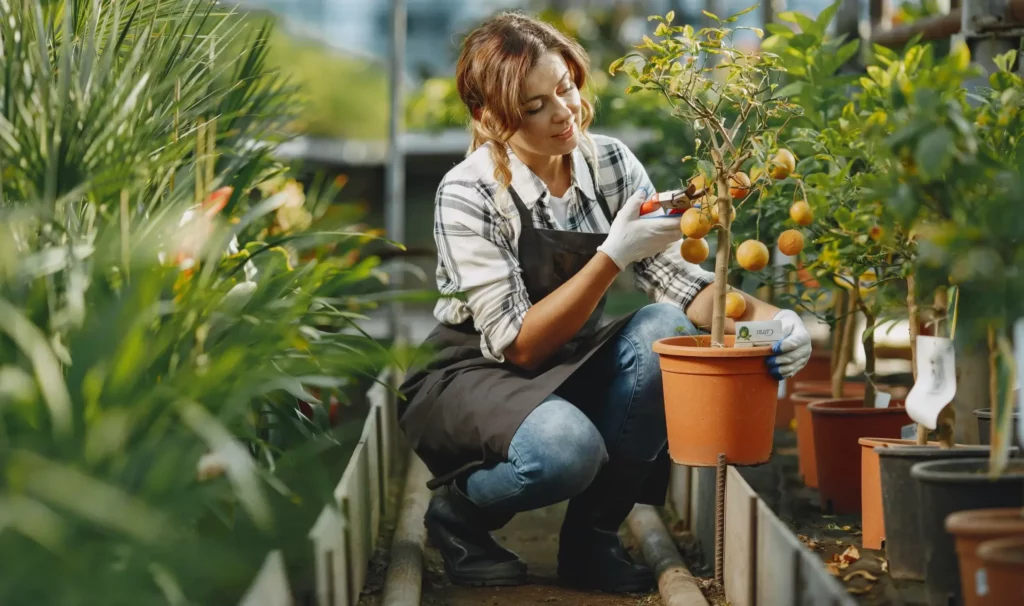
1. You can save money on groceries by creating a sustainable garden. This way, you can grow your own fresh fruits, vegetables, and herbs without having to pay extra prices at the grocery store.
2. If you’re looking for a way to enhance your physical and mental health, sustainable gardening might be just the thing. It will help reduce your stress levels, provide ample exercise, and improve your overall well-being.
3. A sustainable garden can help you promote biodiversity and support the local ecosystems. To achieve this, select native plants and avoid any harmful chemicals.
4. By planting a diverse array of flowers and plants, you can entice vital pollinators like bees and butterflies to your garden or outdoor space. These helpful creatures play an essential role in maintaining a thriving ecosystem.
5. If you involve children in gardening, it can impart valuable knowledge about the natural world – including the importance of protecting it. That way, they’ll learn about sustainability and how to preserve resources, reduce waste, and encourage biodiversity.
6. Sustainable gardening can improve soil quality and reduce erosion by planting cover crops and using compost and other organic fertilizers.
7. Reducing reliance on fossil fuels is possible by cutting down the need for transporting and refrigerating produce.
8. You can decrease your water usage through sustainable gardening methods, such as incorporating rain barrels and drought-resistant plants into your yard. In addition, planting during the optimal season and time of day can significantly reduce overall water consumption.
9. If you are looking for a way to improve your eating habits and minimize exposure to harmful chemicals and pesticides found in store-bought produce, growing your own food could be a great option.
10. Sustainable gardening is a fantastic pastime that brings immense satisfaction and pride in cultivating your crops and designing an eco-friendly space. You’ll enjoy this relaxing hobby while creating an eye-catching oasis that helps the environment.
Understanding Your Local Climate and Soil
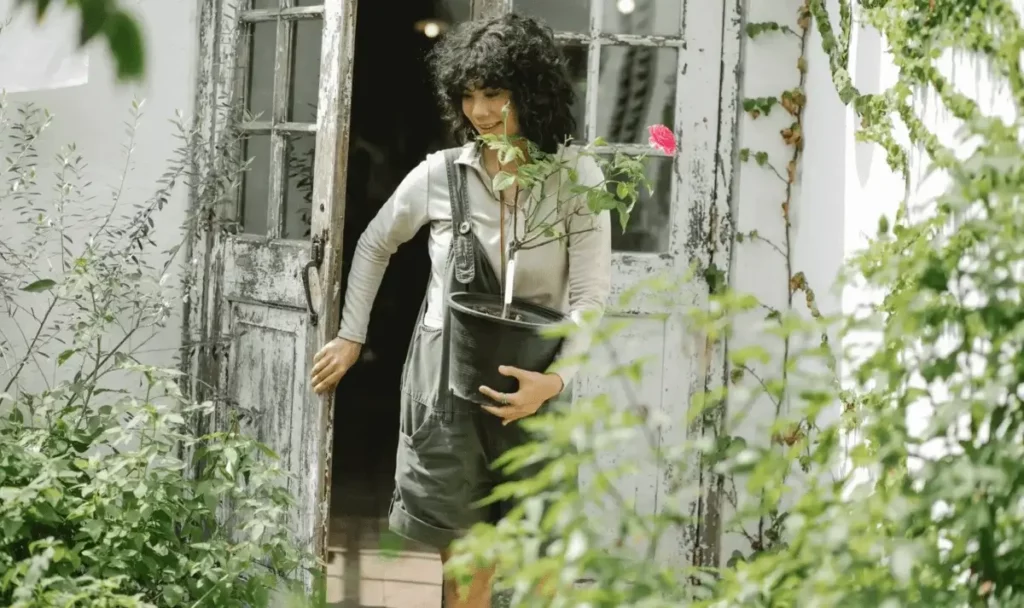
Before you start planting your garden, it is essential to conduct extensive research and fully understand the regional climate and soil characteristics. Examining factors like temperature ranges, typical rainfall amounts, regional weather patterns, and the makeup and texture of your soil can all be included in this.
You can choose the plants you should use for your garden more precisely if you are aware of your local environment. For instance, you might discover that some plants require more maintenance than others and that some are better suited to the soil and climate of your region. You can create a garden that is not only lovely but also simple to maintain by keeping these things in mind.
To learn more about the climate and soil types in your area, seek out guidance from gardening professionals or visit a nursery nearby. These experts possess invaluable knowledge of which plants thrive best within specific environments and regions. For additional research on environmental factors such as climate zones and soil types, a multitude of online resources are available to explore.
Planning Your Garden Space
Once you have thoroughly researched your local environment, it’s time to get started on designing your garden space. Begin by selecting the perfect location for your garden and determining the size and shape of your garden beds. Afterward, consider where each plant will thrive most effectively. These steps are all necessary in creating an optimal garden design.
When planning the location for your garden, it’s crucial to consider the availability of proper sunlight and excellent drainage. Opt for an open spot that receives an ample amount of sunshine all day long and avoids pooling of stagnant water around your plants. Moreover, pick a spot that makes maintenance tasks like watering, weeding, and harvesting a breeze along with ensuring accessibility.
To create a garden that flourishes, consider the plants you want to grow and the space available for them. Choose between raised beds or container gardening based on your needs. Additionally, you could experiment with various depths and shapes to create an appealing layout. Finally, tailor your personal style to reflect your unique personality by choosing appropriate arrangements.
Choosing the Right Plants for Your Garden
To create a sustainable garden that lasts for years, careful plant selection is essential. You can start by taking into account the soil type, amount of sunlight, and climate in your area while choosing the plants. It’s also important to consider which types of plants you want to grow and how they will fit perfectly into your garden area.
When choosing plants, prioritize your local climate. If you experience hot summers and cold winters, select hardy options that can survive. Conversely, in a mild climate with consistently gentle temperatures year-round, you have more flexibility to choose from various plant species.
To ensure proper plant growth, consider the soil type you have. Sandy soils are ideal for some plants, while others prefer loamy or clay soils. You can check your soil’s pH and nutrient levels by buying a cost-effective testing kit online or seeking help from a local nursery or garden center for the most accurate results.
Once you’re familiar with the soil and weather patterns in your location, it’s time to choose specific plants for your garden. Think about the kinds of greenery you’d like to cultivate – perhaps fruits, vegetables, herbs, or flowers? Additionally, consider factors such as color and texture while designing your garden layout.
To ensure a healthy and eco-friendly garden, it’s crucial to select plants that can thrive in your local environment without the use of harmful chemicals or pesticides. Additionally, you can support local wildlife by choosing plants that attract pollinators and beneficial insects. For even better results, consider companion planting- growing related plants together to improve soil quality, control pests, and promote growth.
Preparing the Soil for Planting
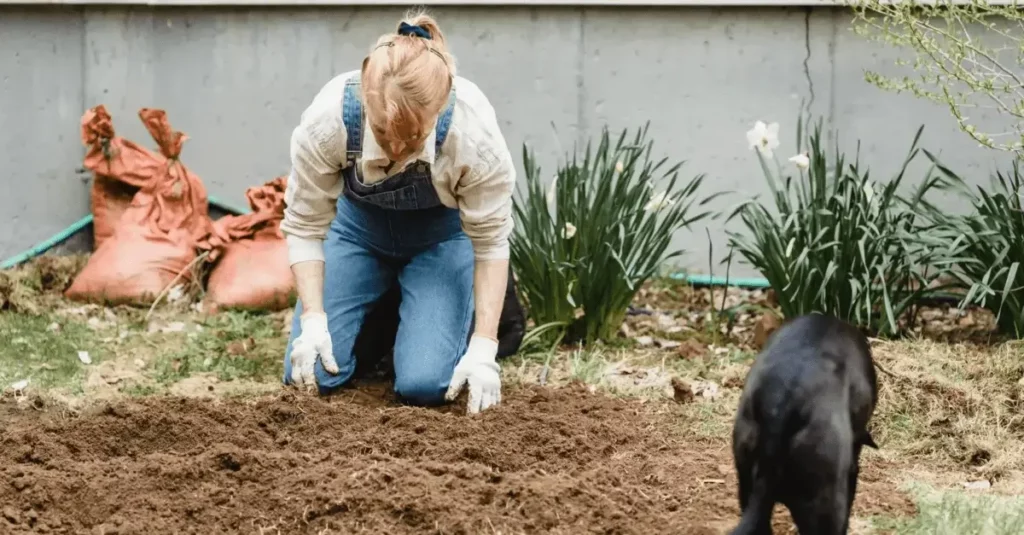
To maximize the growth and success of your plants, it’s important to prep the soil prior to planting. This involves incorporating organic matter like compost or aged manure to enhance fertility and structure. Additionally, you may need to make pH adjustments as necessary for optimal plant health.
If you’re looking to enhance your garden soil, composting is an excellent organic solution to consider. Collect grass trimmings, leaves, and any remaining fruits and vegetables to make the most of this possibility. Composting reduces waste while introducing more fertility into your soil for a sustainable garden experience worth trying.
If you want to improve your soil structure and enhance drainage and aeration, consider adding perlite or vermiculite as additional amendments. These materials can be especially useful in areas with dense clay soils. Additionally, incorporating organic matter alongside these amendments can boost the quality of your soil even further.
To properly prepare the soil for your plants, the pH level must be changed. Simple soil test kits are readily available online or at the majority of garden centers, and they can be used to examine your soil. If your soil has an unbalanced pH, you can add lime to raise it or sulfur to lower it.
To create a garden that ensures robust plant growth and reduces the need for harmful fertilizers and pesticides, invest time in thoroughly preparing your soil. By following this step, you can build a sustainable garden that remains fruitful for years to come while protecting the environment.
Planting and Caring for Your Garden
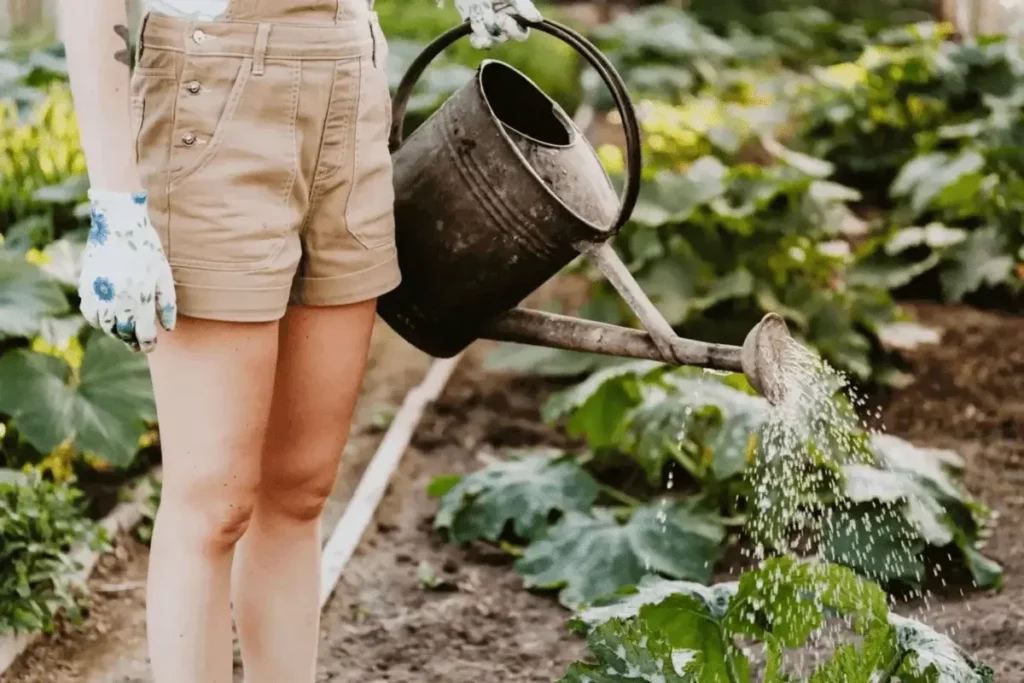
Are you prepared to start planting in your garden? First, ensure that the soil is ready and choose appropriate plants. Follow recommended planting depth and spacing based on plant type. For optimal growth, provide regular irrigation, adequate sunlight exposure, and necessary nutrients for your plants.
Are you looking for a way to guarantee the success of your garden? Utilizing compost is an excellent solution! Composting kitchen scraps, leaves, and grass clippings creates a high-quality source of nutrients for plants and helps bolster soil health. There are two easy ways to apply compost: as a top dressing around plants or by blending it into the soil before planting. Give your garden the boost it deserves with nutrient-rich compost!
Pest control is a crucial factor to take into account. Your garden can suffer damage from pests like aphids, slugs, and snails. Consider using natural pest control techniques like companion planting, which involves planting certain plants together that can help repel pests, to avoid this. You can also use natural pest deterrents like diatomaceous earth or garlic spray.
As your plants mature, it’s crucial to provide them with the utmost care to ensure they remain healthy and fruitful. You’ll need to routinely weed, water, and gently prune any damaged foliage. Additionally, fertilizing your plants regularly will supply the necessary nutrients for proper growth.
Also read: A Comprehensive Guide to Organic Gardening for Newbies
Finally, ensure that you relish the fruitful outcome of your hard work by harvesting your vegetables when they reach their peak and including them in your preferred dishes. You might even consider presenting them at a farmer’s market. Additionally, share this bounty with your loved ones. Gardening is an enriching pastime that grants you access to fresh produce while giving you a sense of achievement.
Tips for Maintaining a Sustainable Garden
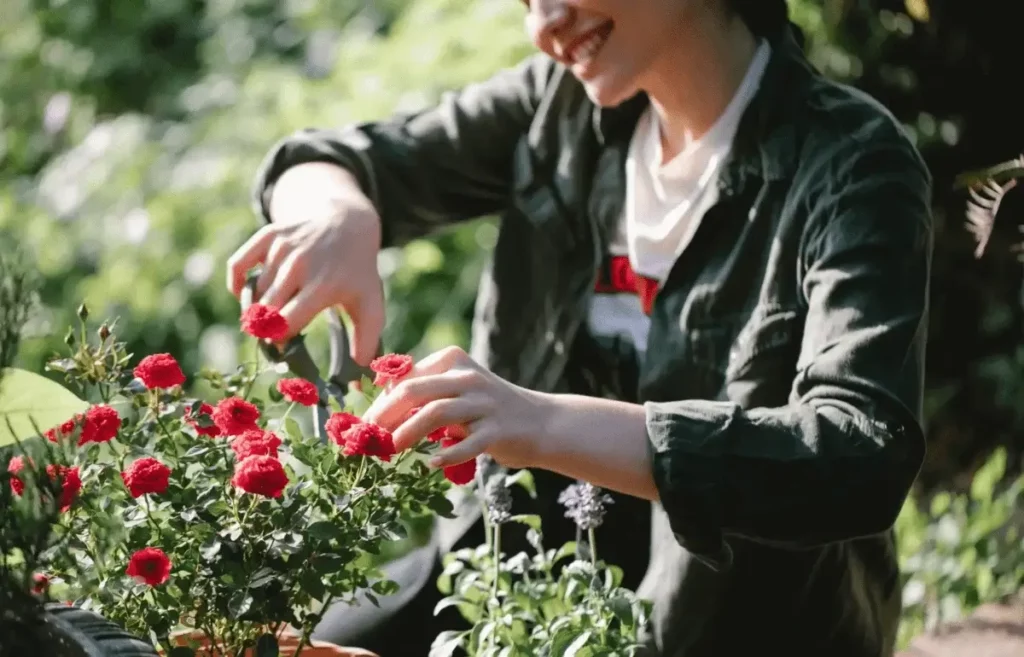
If you desire a flourishing garden, keeping it sustainable could be challenging. But the outcome is beyond rewarding. Follow these tips if you are looking to enhance your garden’s health and productivity.
1. Use natural methods to eradicate diseases and pests. For instance, companion planting can help deter harmful insects and draw in helpful ones. Also think about putting in some natural predators in your garden, like ladybugs or praying mantises.
2. Looking to lower your water bill and save some water? Consider collecting rainwater! This quick and easy method involves setting up a few rain barrels to gather the water, which can then be used to irrigate your plants.
3. To maintain robust and productive plants, opt for fertilizing your soil. One excellent organic option is compost due to its high nutrient-density and ability to improve soil structure while aiding in water retention. Additionally, fish emulsion and bone meal are two other effective organic fertilizers that can provide a beneficial boost.
4. To effectively manage pests and diseases in your garden, crop rotation is a recommended strategy. By planting different crops every season, in various parts of the garden, you can reduce the risk of illness spreading through soil transmission and preserve soil fertility. Crop rotation helps to minimize disease outbreaks and keep your garden thriving.
5. Finally, luring beneficial insects and pollinators to your garden can increase yields and lessen the need for chemical pesticides. Planting an array of flowers and herbs like marigolds, lavender, and basil will attract bees, butterflies, and other beneficial insects to your garden.
Harvesting Your Garden
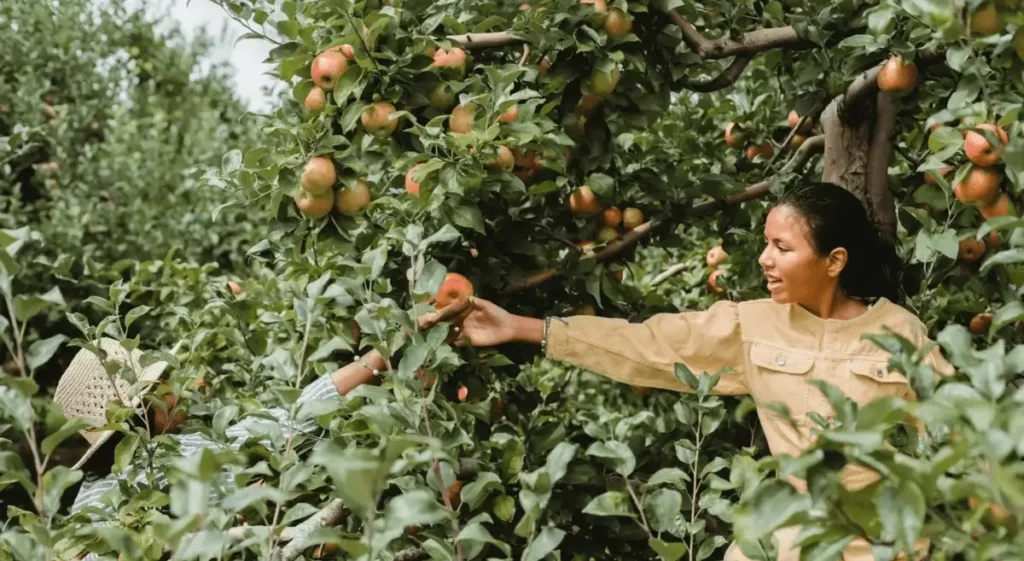
As an avid gardener, you know the satisfaction that comes with harvesting your own fruits, vegetables, and herbs. However, it’s essential to do so properly. Following specific instructions for each plant is crucial to ensure ideal circumstances for harvesting. For example, some plants should be picked when fully ripe while others can be harvested when just beginning to mature. Understanding the particular requirements of each plant in your garden is key to a bountiful harvest.
To ensure your plants keep thriving, it’s crucial to make regular harvests a priority. By harvesting them properly and on a regular basis, you send a signal that encourages the plant to produce more fruit or vegetables to compensate for what was taken. Moreover, if you hope to keep the flavor of your freshly harvested yield intact, correct storage methods are essential. The means by which you store your produce will depend on its type: some will do well in cooler environs while others may benefit from refrigeration. Proper storage ensures higher quality and taste for many weeks after gathering.
Common Problems and Solutions for Beginner Gardeners
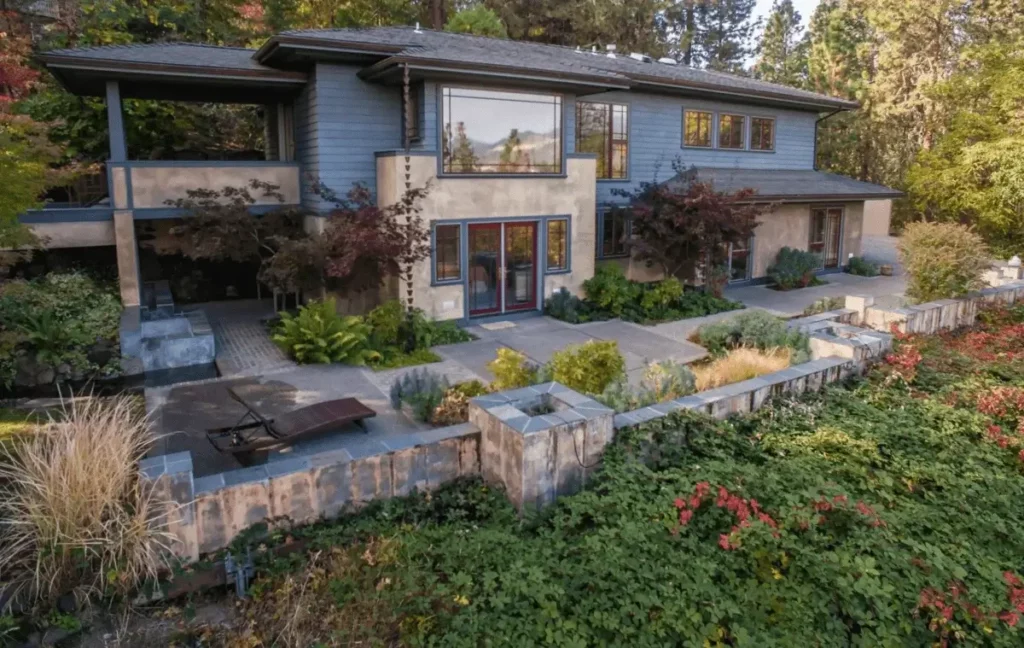
When starting your garden, it’s common to encounter issues such as pests, diseases, and nutrient deficiencies. While these can be frustrating, they’re also often solvable with a bit of research and effort. By taking the time to identify and address these problems, you can create a thriving oasis in your yard. For additional tips on addressing typical gardening issues, please refer below.
1. If you want to keep pests at bay and attract helpful insects, consider employing various pest repellents and companion planting techniques. For instance, planting marigolds alongside tomatoes can deter nematodes while cultivating chamomile and basil together can lure pollinators and bees. These are just a few examples of companion planting that can make your garden thrive.
2. Practice good hygiene and sanitation as a further means of halting the spread of disease. This entails sterilizing and cleaning your gardening equipment after every use, as well as avoiding crowding your plants too closely together to stop the spread of disease.
3. To enhance soil quality and prevent nutrient deficiencies, consider planting cover crops alongside organic fertilizers and soil amendments. Examples of effective cover crops include rye, buckwheat, and clover. By utilizing these techniques in your farming practices, you will ensure optimal soil health and improve crop yields.
To become a skilled gardener and resolve typical gardening complications effortlessly, consider these recommendations and conduct some additional research with attentiveness. Always bear in mind that investing a little bit of effort and care into your garden can go a long way in creating an exquisite, flourishing outdoor area.
Best Practices for Sustainable Gardening
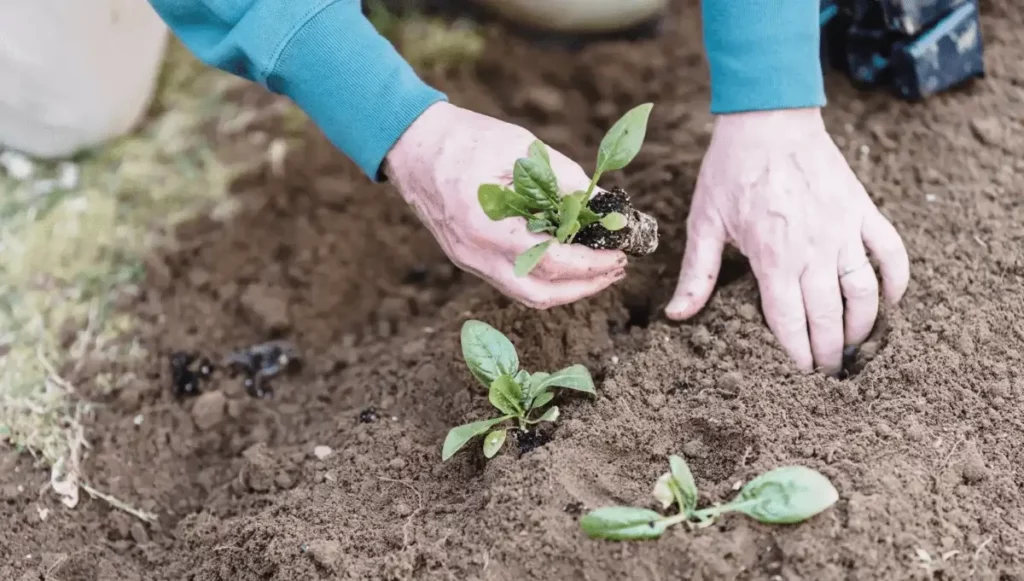
When it comes to sustainable gardening practices, there are a few best practices that can help you to cultivate a thriving garden while minimizing your environmental impact. As a beginner, it is important to understand these practices so that you can start your gardening journey on the right foot.
1. To start strong, begin with healthy soil. It’s a well-known fact that good soil health is the primary foundation for germination and plant resistance to disease and other negative factors. Therefore, it’s advisable to consider enriching your soil with compost or other organic compounds that will give nutrients necessary for plant growth.
2. To conserve water, fertilizer, and pesticides, it is recommended that native plants be the first choice for all gardeners. When grown in their natural habitat, these plants have adapted to the region’s climate and pests.
3. When selecting plants for your yard, be sure to choose ones that thrive in your specific region and match the site conditions such as soil type and sun exposure. This wise choice will limit plant upkeep time and water needs, making your life easier in the long run.
4. To efficiently use water for your plants, consider watering them early in the morning or late at night to reduce evaporation. Alternatively, you can also try drip irrigation or a soaker hose to deliver water directly to the roots of your plants. This can help ensure that the plant gets enough moisture while minimizing waste due to inefficient watering methods.
5. Synthetic fertilizers contain high levels of nitrogen and phosphorus that can pollute waterways. Use organic fertilizers, such as compost or fish emulsion, to feed your plants.
6. To control pests naturally, you can utilize integrated pest management (IPM) techniques. These methods include handpicking insects or using organic sprays as opposed to relying on chemical pesticides. By implementing IPM approaches, you can effectively manage pests.
7. To maintain the health and vibrancy of your garden, incorporating mulch is a must. By applying organic materials, such as leaves or straw, you can retain moisture in the soil, prevent weeds from growing and stabilize soil temperature.
8. To improve your gardening success, consider practicing companion planting. By strategically planting different species together, you create mutually beneficial partnerships that can help repel pests and enhance soil health.
To create a sustainable garden that supports both you and the environment, try these best practices. Start small and develop your gardening skills over time for lasting success.
Also read: A Complete Guide to Year-Round Vegetable Gardening: 10 Steps for Success
Conclusion and Next Steps for Your Garden
If you’re interested in creating a sustainable garden, regardless of your gardening experience, there are simple steps you can follow. Begin by familiarizing yourself with your local environment and selecting appropriate plants. Ongoing maintenance is important as well to create a garden that supports biodiversity and encourages environmental sustainability while providing fresh produce for your family’s consumption.
As a novice home gardener, it’s completely acceptable to seek assistance. Gain support and guidance by visiting your local nursery, joining a gardening club, or connecting with other gardeners online. With persistence and patience, creating an eco-friendly gardening paradise that you’ll relish is achievable.



